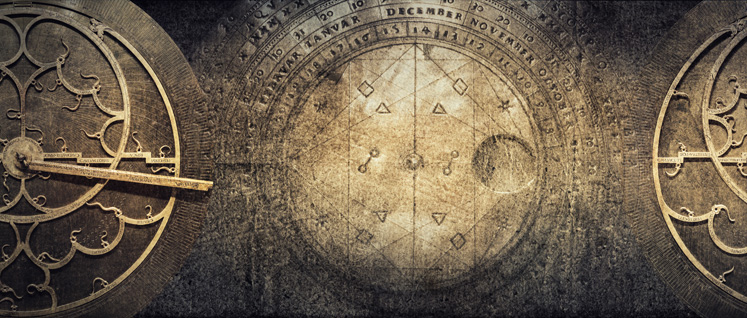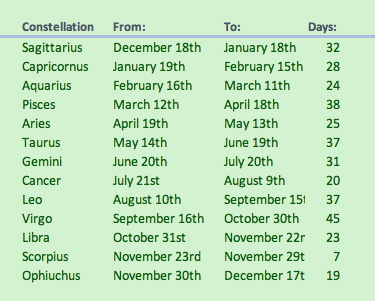Lawrence Diehl Brown

Astrology of Lost Civilizations
Published Feb 21, 2024. L Brown, author.
Origins in Divinology
It's important to understand the use of star-gazing by ancient civilizations when studying their histories. In its most basic form, astrology is a form of making predictions that consists of interpreting the influence of stars and planets on earthly affairs and human destinies. In ancient times astrology and astronomy (observations of the heavens) were one and the same.
The earliest records we have indicate it may have originated in Mesopotamia (3rd millennium BCE) and spread to India. The Western form was originally developed in Greek civilization during the Hellenistic period. Islamic culture developed it further and it was returned to European culture through Arabic learning during the Middle Ages.
The ancient Babylonians observed the path of the sun through 13 constellations. But in order to make their zodiac fit within their 12-month calendar (based on the lunar cycle), one of the constellations had to be left out. So Ophiuchus got the ax. The chart they created for each month contained 30° of celestial longitude, thus creating the first known celestial coordinate system. To tidy things up, they assigned each of those 12 constellations equal amounts of time.
The Mayans Got it Right
 The ancient Mayan zodiac was composed of 13 constellations, including the constellation Ophiuchus, which is exactly what is seen in the sky today. The description of the 13 constellations of the Mayan zodiac is found in The Paris Codex, (Codex Peresianus), one of the very few texts of the pre-Conquest Maya that survived the book burnings by the Spanish clergy during the 16th century. As everyone by now knows, the Mayans were famous for their precise astronomical observations and their accurate predictions of eclipses and Venus rising.
The ancient Mayan zodiac was composed of 13 constellations, including the constellation Ophiuchus, which is exactly what is seen in the sky today. The description of the 13 constellations of the Mayan zodiac is found in The Paris Codex, (Codex Peresianus), one of the very few texts of the pre-Conquest Maya that survived the book burnings by the Spanish clergy during the 16th century. As everyone by now knows, the Mayans were famous for their precise astronomical observations and their accurate predictions of eclipses and Venus rising.
Because of the slow wobble of the earth's axis, the plane of the earth's ecliptic now crosses the constellation Ophiuchus so there are currently 13 zodiacal constellations in the northern hemisphere, not 12. The chart above shows the correct zodiacal sign for each period as well how many days the sun spends in each constellation.
Modern astrologers continue to use a tropical zodiac, rather than the sidereal one. The tropical zodiac computes the sun in 1 of 12 zones around the earth. Each of the 12 has an angular length of 30°. 12 X 30° = 360°. The frame of reference for these zones is the sun’s position relative to the earth’s horizon. So it has nothing to do with what is seen in the sky, just an arbitrary division of the sky into 12 zones, a practice that goes back to the time of Ptolemy (100 - 170CE).
Shamanic Astrology Predates Astrological Chart-making
Nearly every indigenous culture on earth had it’s own version. For centuries, shamanic astrology has been ceremonial and participatory, and operates from a mythic perspective. Shamanic cultures around the world tell us that authentic shamanic ceremonies are mythic re-enactments of cosmological events. Over time, the cultural ceremonies and mythic stories created by the various civilizations are draped onto the physically observed cycles of the planets and patterns of the constellations. These become symbolic, archetypal energies that value the totality of the human experience with all its gold and shadow. The practitioner of Shamanic Astrology explores a non-hierarchical view of archetypal possibilities.
Bibliography:

